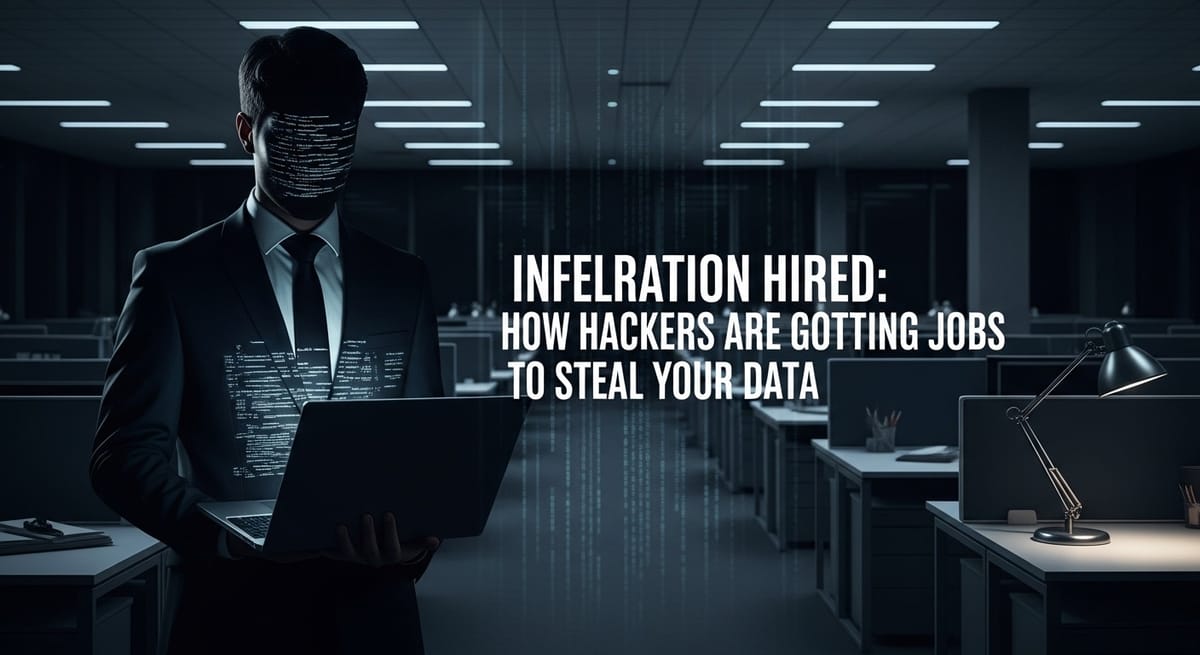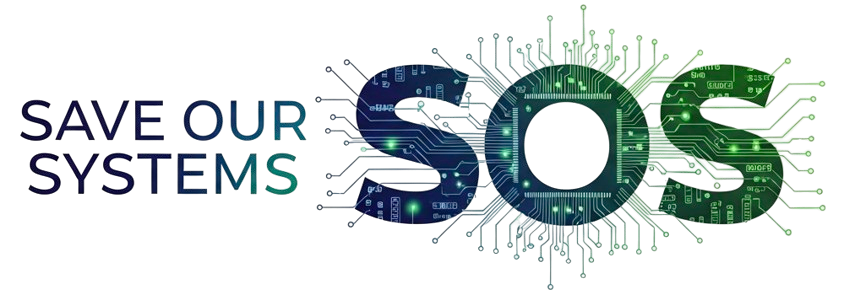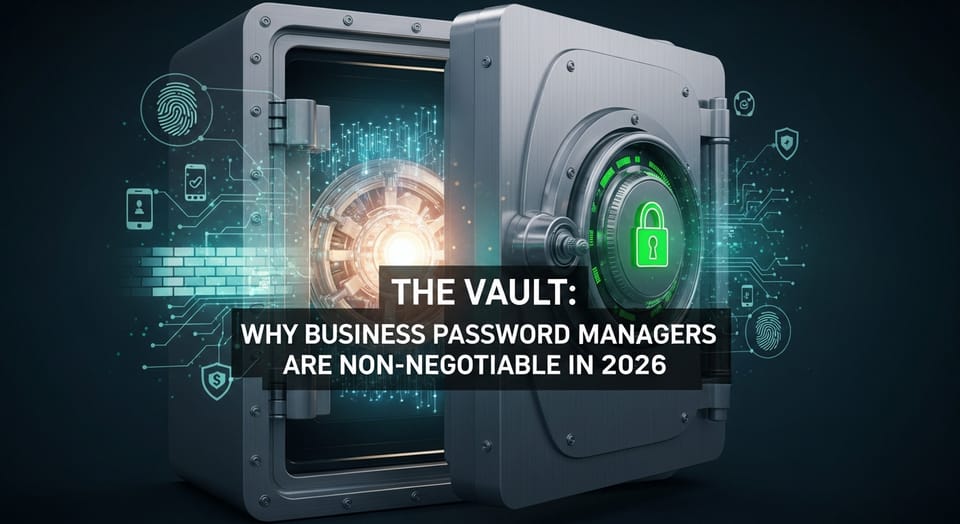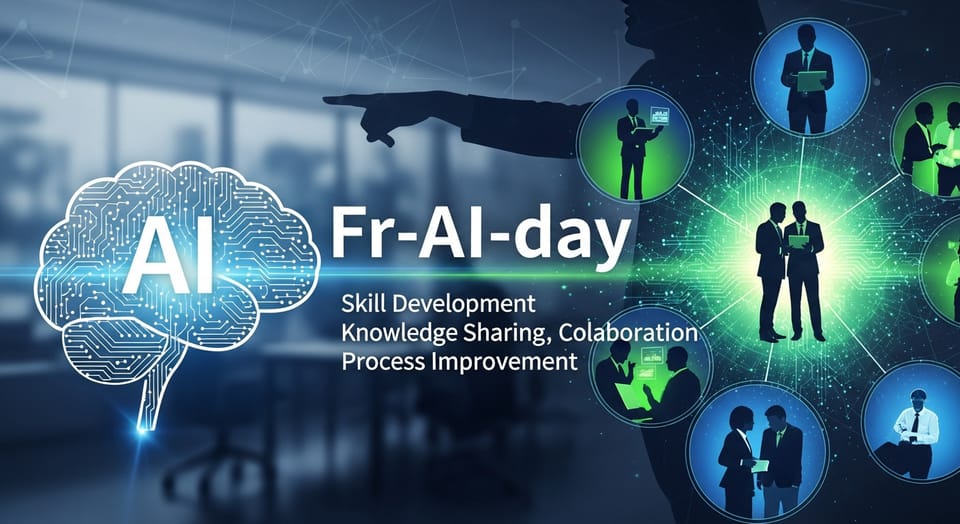Infiltration Hired: How Hackers Are Getting Jobs to Steal Your Data

In an alarming evolution of cyber threats, malicious actors are now bypassing technical security measures entirely by walking through the front door with employee badges. State-sponsored hackers and sophisticated threat groups have developed a new strategy: securing legitimate employment to gain insider access to confidential information and systems. This infiltration tactic blends traditional espionage with cyber attacks, creating a multi-dimensional threat that many organizations are ill-prepared to combat.
The Growing Threat of Covert Workforce Infiltration
Unlike conventional cyberattacks that exploit technical vulnerabilities, workforce infiltration provides attackers with legitimate credentials and authorized access that wouldn't be available through external attacks. According to the Verizon 2023 Data Breach Investigations Report, insider threats account for approximately 22% of security incidents, with a significant portion involving intentional malicious activity rather than negligence.
The KnowBe4 incident represents a watershed moment in this emerging threat landscape. A North Korean operative successfully gained employment with the cybersecurity firm, potentially providing access to sensitive client information and security tools. This case exposed how vulnerable even security-focused organizations can be to sophisticated human infiltration techniques.
"This approach combines human intelligence operations with cyber espionage, creating a threat that bypasses many conventional security measures," explains a senior threat researcher at Mandiant. "Organizations have spent decades hardening their perimeters, but these actors simply apply for jobs instead of trying to hack in from the outside."
Nation-State Actors Leading the Charge
Multiple nation-states have been documented employing workforce infiltration techniques:
- North Korean threat actors (Lazarus Group/APT38): CISA's advisory on North Korean IT workers notes these operatives typically earn between $3,000-$20,000 monthly while working remotely for unsuspecting companies, generating hundreds of millions of dollars annually for the North Korean regime.
- Russian intelligence-affiliated APT groups (APT28/Fancy Bear, APT29/Cozy Bear): These groups have been observed targeting critical infrastructure, defense contractors, and government agencies through various infiltration methods.
- Chinese state-sponsored groups (APT10/Stone Panda, APT40/Leviathan): These actors have demonstrated sophisticated capabilities in penetrating organizations through human assets, particularly targeting intellectual property and strategic information.
- Iranian threat actors (APT33/Elfin, APT35/Charming Kitten): Known to focus on critical infrastructure, defense sectors, and geopolitical intelligence gathering through multiple vectors including insider placement.
Sophisticated Infiltration Methodologies
Threat actors employ several sophisticated approaches to infiltrate target organizations:
Identity Fabrication and Manipulation
Attackers create entirely fictional personas with falsified credentials, employment history, and references. Some even engage in identity theft, assuming the identity of real professionals in the industry. Mandiant indicates that APT actors are increasingly sophisticated in their identity creation, often establishing online personas years before attempting infiltration, creating a comprehensive digital history that can withstand standard background checks.
Strategic Targeting and Access
These threat actors specifically target remote positions to minimize physical security barriers and in-person verification. The post-pandemic increase in remote work has significantly expanded this attack surface. They often request below-market compensation to appear more attractive to potential employers, particularly startups or organizations with limited budgets.
"They focus on remote roles only," notes a cybersecurity consultant familiar with these cases. "They will sometimes put very low salary requirements to attract employers, making themselves seem like bargains compared to market rates."
According to Symantec Threat Intelligence, attackers particularly target positions with access to source code repositories, identity management systems, and customer data platforms, as these provide extensive lateral movement opportunities once inside the organization.
Organizational Vulnerabilities
Several organizational factors create vulnerabilities to covert workforce infiltration:
Hiring Process Weaknesses
Competitive markets for technical talent lead to expedited hiring processes that prioritize speed over thorough verification. Virtual interviews and remote onboarding reduce opportunities for in-person verification and behavioral assessment. Traditional reference checks are increasingly circumvented through fake references or social engineering.
The National Counterintelligence and Security Center notes that organizations in critical technology sectors face particular pressure to rapidly onboard technical talent, sometimes at the expense of thorough vetting processes.
Technical and Operational Vulnerabilities
Many organizations struggle with overprivileged accounts and insufficient implementation of least privilege principles, creating opportunities for unauthorized data access. Limited visibility into user activities, particularly in remote work environments, makes detection challenging. Disconnects between HR, IT security, and physical security teams create gaps in comprehensive threat detection.
"Healthcare is traditionally weak versus other sectors and may be vulnerable to a hiring of an IT employee who could deploy ransomware to their systems," warns a healthcare security specialist. The FBI reports that healthcare organizations experienced a 35% increase in suspected workforce infiltration attempts between 2020-2023, coinciding with increased interest in medical research and healthcare data.
Detection and Prevention Strategies
Organizations can implement several key strategies to mitigate the threat of covert workforce infiltration:
Enhanced Hiring Practices
Implementing document verification, biometric checks, and in-person validation where possible can significantly reduce risks. Conducting thorough investigations beyond standard criminal checks, including social media analysis, credential verification through multiple channels, and deep reference checks is essential. Technical assessments that validate claimed expertise and abilities should be standard practice.
According to Verizon's security research, organizations that implement enhanced identity verification processes can reduce the risk of malicious insider placement by up to 60%.
Ongoing Monitoring and Detection
Implementing advanced behavioral analytics to establish baselines and detect anomalous activities is crucial. Monitoring for unusual system access, particularly outside normal working hours or to systems unrelated to job functions, can reveal infiltrators. Deploying tools that can identify unusual data access or exfiltration patterns helps catch threats before significant damage occurs.
Mandiant research indicates that organizations with robust User and Entity Behavior Analytics (UEBA) solutions detect potentially malicious insider activities an average of 58 days earlier than those without such systems.
Access Management
Implementing comprehensive zero trust architecture requires continuous verification regardless of position or previous access. Utilizing least privilege access principles ensures employees only have access to what they need for their specific job functions. Employing strict segregation of duties for critical systems prevents any single individual from having excessive control.
Industry-Specific Implications
Different sectors face unique challenges and risks from covert workforce infiltration:
Critical Infrastructure
Positions with access to industrial control systems present particular risks due to potential physical safety impacts. Infiltration of vendors or suppliers that service critical infrastructure can create cascading security risks. The CISA advisory notes that critical infrastructure sectors including energy, water, and transportation face targeted attempts by APT actors to place operatives in technical and administrative positions.
Technology and Software Development
Developers and engineers can introduce backdoors or vulnerabilities into products, leading to widespread compromise. Access to proprietary technologies and research enables intellectual property theft. According to Symantec, technology companies experience targeted infiltration attempts at approximately 2.5 times the rate of other sectors, particularly those developing security products, cloud infrastructure, or artificial intelligence technologies.
Healthcare
Positions with access to protected health information present significant regulatory and privacy risks. Roles with visibility into proprietary research or clinical trials can compromise valuable intellectual property. IT positions supporting life-critical systems could potentially impact patient safety if compromised.
Emerging Trends and Future Outlook
Several evolving trends are shaping the future landscape of covert workforce infiltration:
AI-Enhanced Threats
The use of artificial intelligence to create convincing video personas for remote interviews is becoming more feasible. AI-generated credentials and portfolios create more convincing falsified documents and work samples. Research from the National Counterintelligence and Security Center indicates that advanced persistent threat actors are already experimenting with generative AI to create more convincing cover identities and documentation.
Hybrid Work Impact
The normalization of remote and hybrid work creates more opportunities for infiltration without physical presence. Teams spread across multiple locations create verification and monitoring difficulties. According to Verizon's security analysis, organizations with primarily remote workforces experience approximately 40% more difficulty detecting potential insider threats compared to those with on-site operations.
Regulatory and Compliance Considerations
Organizations must navigate complex regulatory landscapes while addressing this threat. Government and defense contractors must adhere to formal personnel security programs. Industry-specific requirements (HIPAA, GLBA, NERC CIP, etc.) mandate appropriate security controls and background screening. Requirements to disclose significant security incidents to regulators, law enforcement, or affected parties add complexity to the response process.
The National Counterintelligence and Security Center recommends that organizations in critical technology sectors develop specific protocols for identifying and reporting suspected infiltration attempts to appropriate authorities.
Conclusion: A Multi-Layered Defense
As threat actors continue to evolve their tactics, organizations must adapt by implementing comprehensive security strategies that address both technical and human elements of cybersecurity. The covert workforce infiltration threat requires a multi-layered approach that begins with enhanced hiring practices, continues with ongoing monitoring, and is supported by robust access controls.
"The perimeter is no longer just your network," concludes a CISA advisory officer. "Your perimeter begins with your hiring process and extends to every employee interaction with your systems. Organizations need to think beyond firewalls and consider the human elements of security more carefully than ever before."
By understanding the methodologies, vulnerabilities, and defense strategies associated with covert workforce infiltration, organizations can better protect their most sensitive assets from this sophisticated and evolving threat.
Sources
- CISA Advisory. (2023). "North Korean IT Workers: How to Identify and Mitigate Hiring Risks." Cybersecurity and Infrastructure Security Agency.
- FBI & CISA Joint Advisory. (2022). "Understanding and Mitigating Russian State-Sponsored Cyber Threats to U.S. Critical Infrastructure." Federal Bureau of Investigation.
- Mandiant. (2023). "APT Actors Exploiting Legitimate Employment Opportunities." Mandiant Threat Intelligence.
- National Counterintelligence and Security Center. (2022). "Protecting Critical and Emerging US Technologies from Foreign Threats." Office of the Director of National Intelligence.
- Symantec Threat Intelligence. (2024). "The Insider Threat: When Hackers Come Through the Front Door." Broadcom Software.
- Verizon. (2023). "2023 Data Breach Investigations Report." Verizon Business.
- Deloitte. (2023). "The Rising Threat of Insider Risk in a Hybrid Work Environment." Deloitte Risk Advisory.
- IBM Security. (2023). "Cost of a Data Breach Report." IBM and Ponemon Institute.
- Microsoft Digital Defense Report. (2023). "Evolving Tactics in Nation-State Operations." Microsoft Corporation.
- SANS Institute. (2024). "Insider Threat Mitigation in Modern Enterprises." SANS Reading Room.




